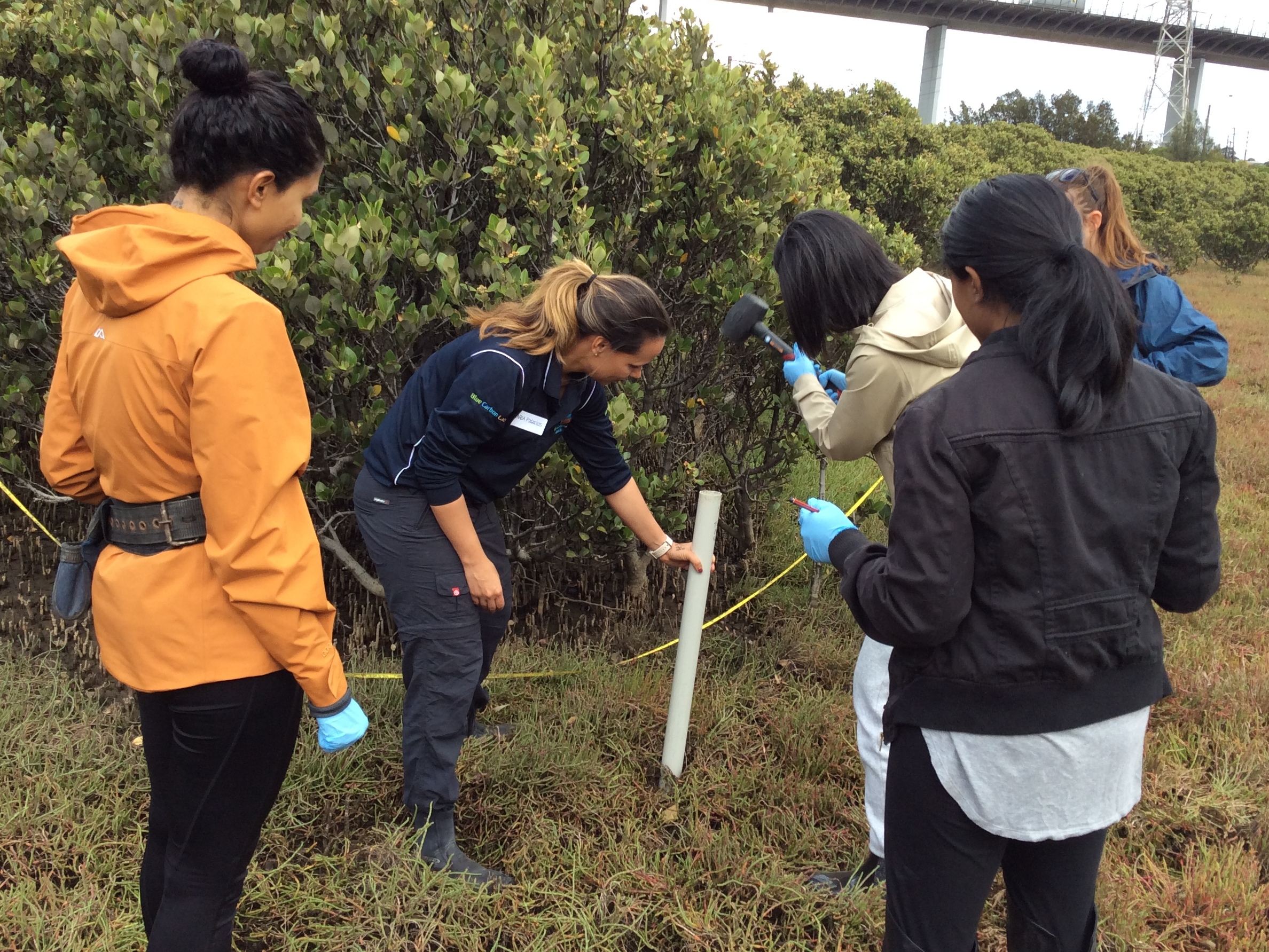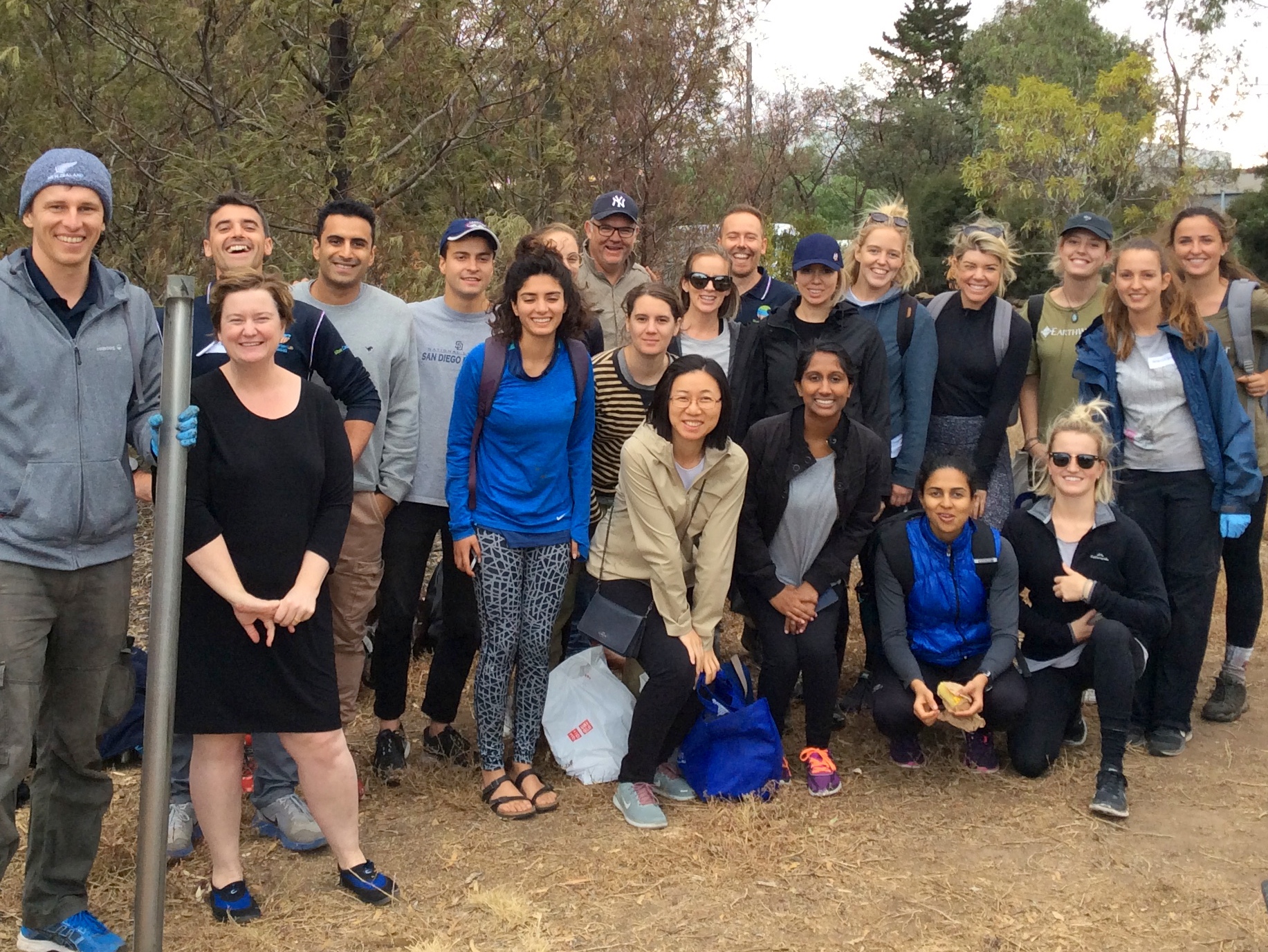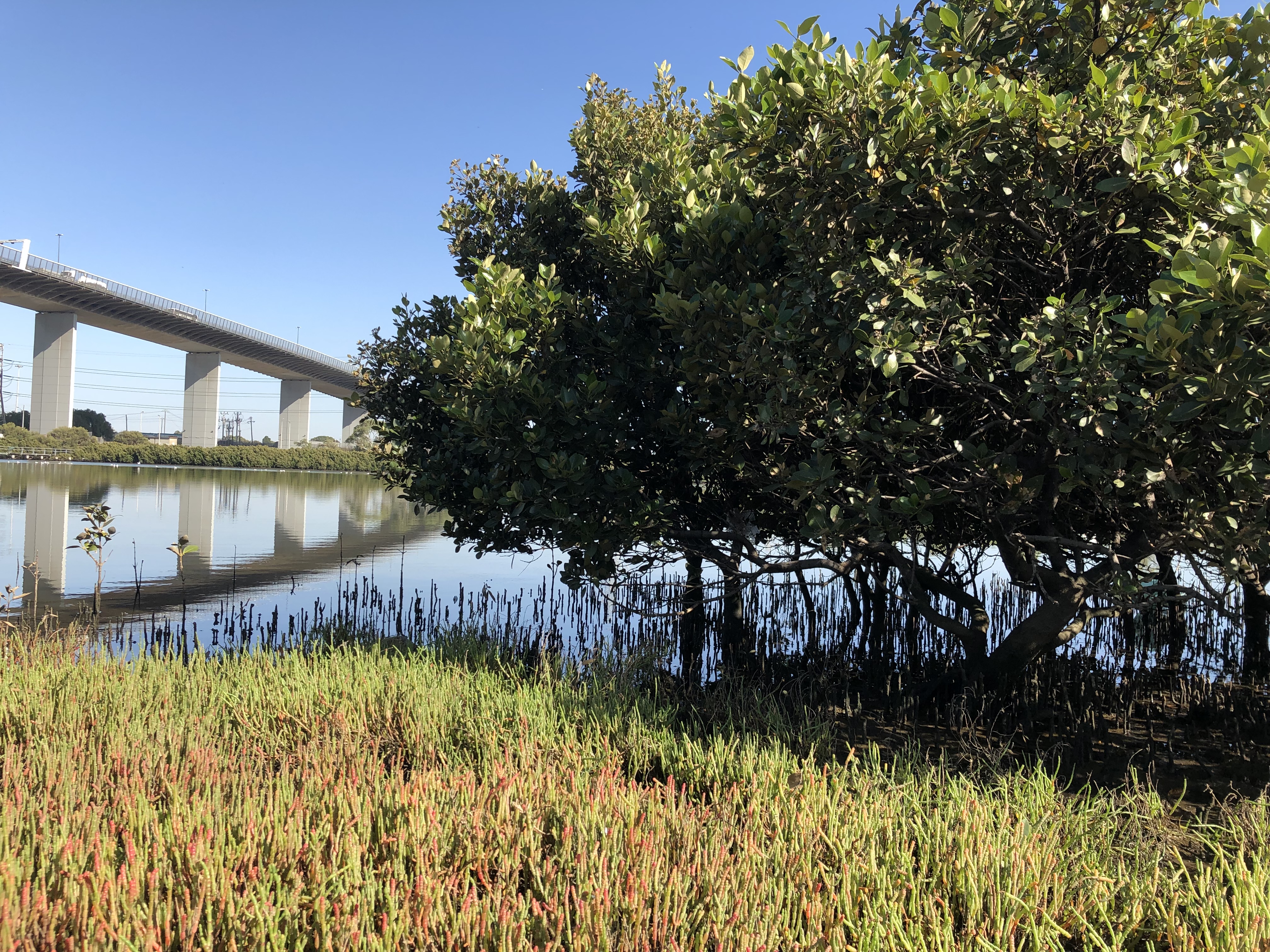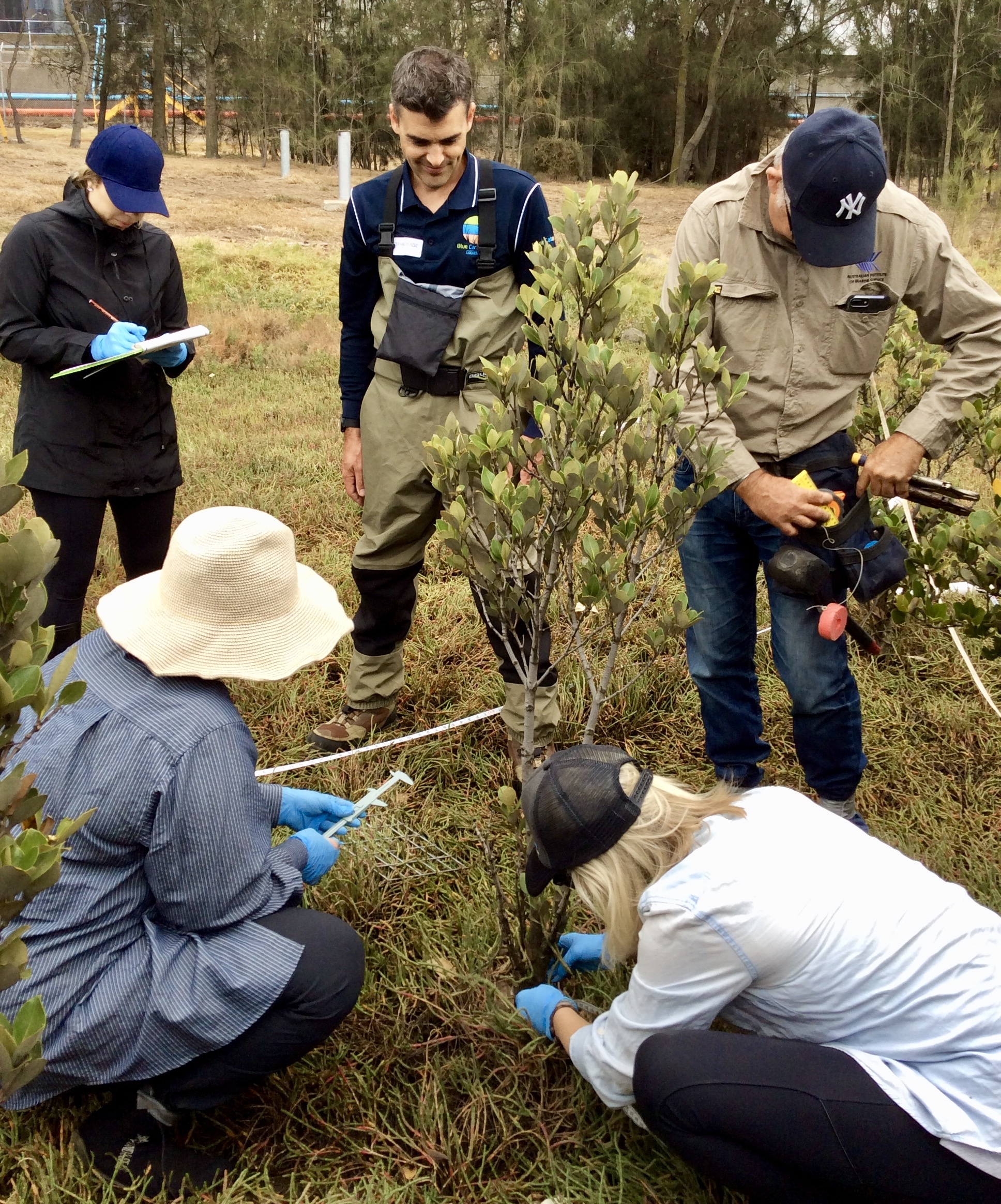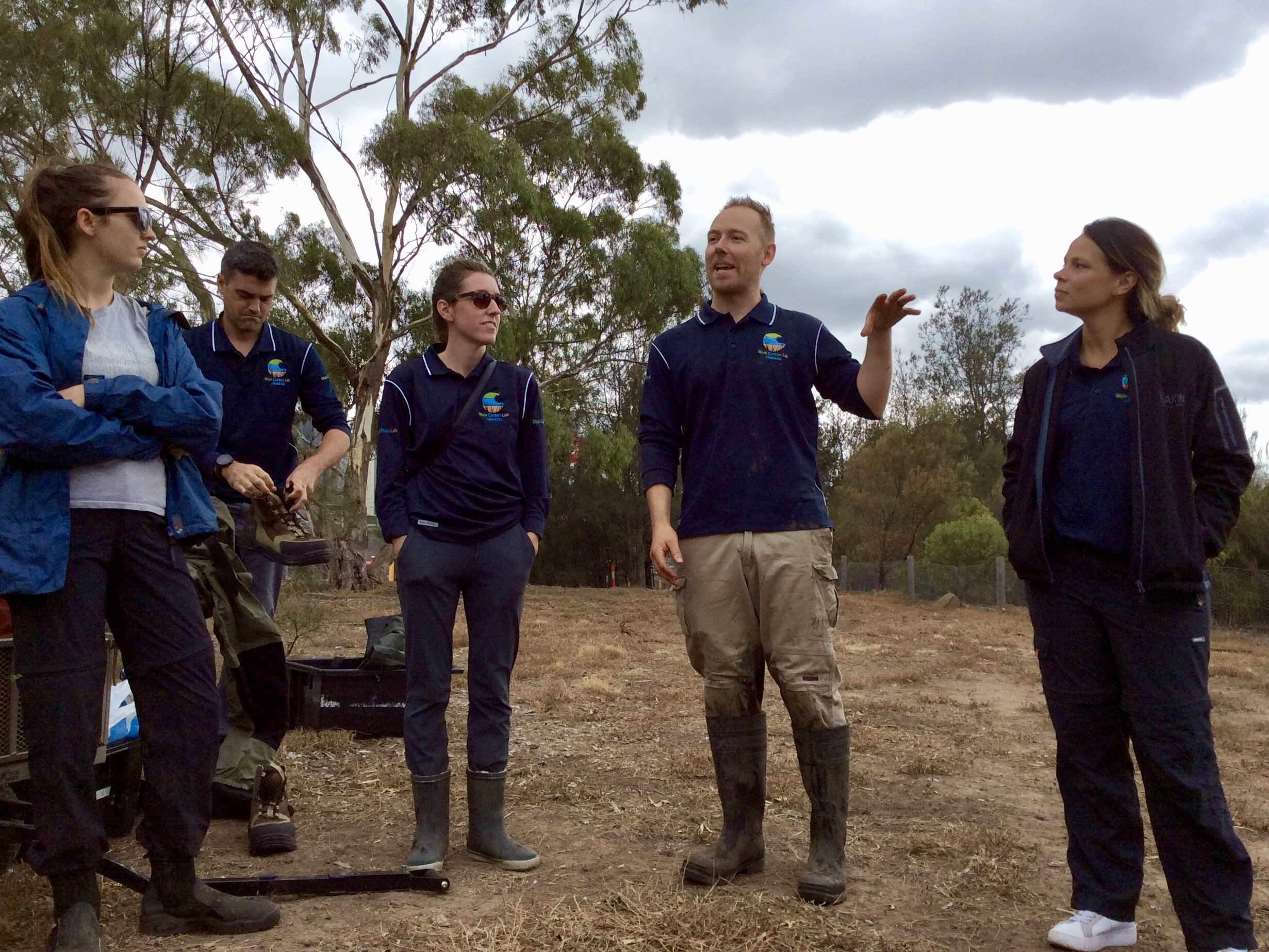Date: April 8, 2019
Participants: HSBC, KPMG, Woodside energy, ANZ, AusPost, Ernst & Young
Site: Stony Creek Backwash, Melbourne
Research: Quantifying Blue Carbon gains from mangrove restoration
From wasteland to wetland !
The day in the field kicked-off with Steve Wilson, president of Friends of Stony Creek, who introduced participants to the history and ecology of the site. Steve explained that back in 1986 a Citizen Scientist planted >1000 mangrove seedlings at Stony Creek backwash, below the West Harbor Bridge. Although most of the mangroves died (probably due to all the chemicals and pollutants in the area), those that survived have been successfully expanding, transforming the coast from a wasteland to a wetland.
As part of the HSBC citizen science program, we are sampling the area to quantify how much Blue Carbon has been accumulating in the area thanks to the planting and spread of the mangrove forest. To achieve this, participants helped us survey the mangrove carbon stocks, both above ground (ie. measuring tree canopies, height, etc..) and below ground (ie. taking deep soil cores). In Blue Carbon systems, such as mangroves, up to 80% of the atmospheric carbon trapped is stored in the soil.
Loaded with PVC pipes, mallets, grips, measuring tapes and quadrats, participants pierced through the thick forest to set 5m x 5m sampling plots. After a couple hours the tide started coming in and water rising above everyone’s gumboots. Despite the many wet socks, participants raced against the tide to finish all the sampling required! Sampling was intense with many plots having more than 80 mangrove trees.
Most of the soil cores collected were extruded on site, giving participants the opportunity to examine the different sediment layers on the cores. Old, deep layers had a black-oily look (indicating the pollution in the area decades ago), while those closer to the surface had healthy-brown layers deposited since the establishment of of the mangroves.
Massive thanks to all the volunteers that joined the #BlueCarbonArmy to learn and contribute to Blue Carbon research!

